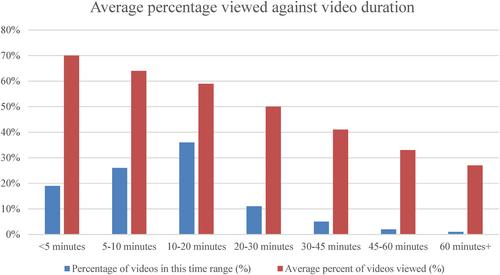Learner engagement with instructor-generated video
Abstract
Effective video resources are assumed to promote learner engagement, but the extent to which this occurs is unclear. This study examines learners' engagement with instructor-generated video. It contributes an analytical synthesis of qualitative and quantitative data that provides the basis for investigating the extent to which, and how, learners engage with video resources provided in their courses. Specifically, three dimensions of learner engagement with video are studied: behavioural, cognitive and affective. The study contributes to educational technology research by identifying distinctive patterns of learner control over the use of video which diverges from instructors' assumptions. It shows the complex and nuanced features of cognitive and affective engagement. Videos can have positive effects, but inappropriate use of technical features results in learner disengagement. This study contributes a novel use of signalling theory, suggesting the importance of instructor signals concerning relevance, focus and utility as a feature of video generation, as a prerequisite of cognitive engagement. A research and theory development agenda is developed, locating video-based learning in student contexts as a basis for explaining both engagement and disengagement with video technology affordances.
Practitioner notes
What is already known about this topic
- Higher education tutors are increasingly expected to generate video content as a feature of their course delivery.
- Although effective video resources are assumed to promote learner engagement, the extent to which this occurs is unclear.
- Video technology affordances rarely feature in academic professional development programmes leaving tutors ill-equipped to understand how and in what ways students engage with video resources as a part of their courses.
What this paper adds
- A novel use of signalling theory to explain different patterns of learner engagement and disengagement.
- Learner agency and control results in video technology affordances being fitted and ‘flexed’ around factors that instructors rarely consider in the video generation process.
- A new model to describe factors that affect student engagement with instructor-generated video.
Implications for practice and/or policy
- Raise awareness for instructors about patterns of student engagement with video technology affordances that affect learning experience and outcomes.
- Implement professional development programmes to equip instructors to design and generate video content that takes account of patterns of behavioural, cognitive and affective engagement and signals relevance, focus and utility.
- Develop clear policies regarding technical features of video generation to avoid learner disengagement.


 求助内容:
求助内容: 应助结果提醒方式:
应助结果提醒方式:


